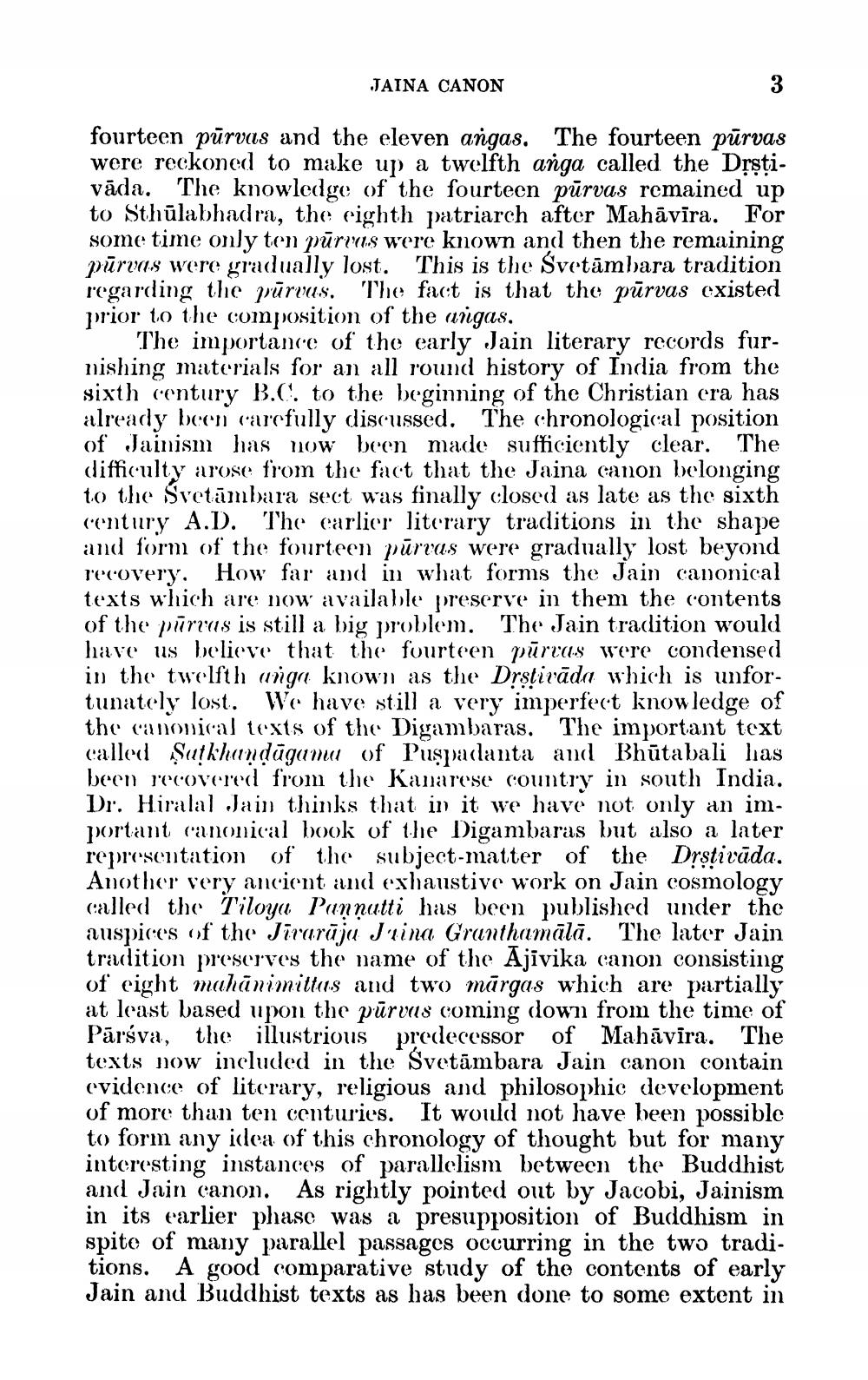________________
JAINA CANON
fourteen pūrvas and the eleven angas. The fourteen pūrvas were reckoned to make up a twelfth anga called the Dșstivāda. The knowledge of the fourteen pūrvas remained up to Sthūlabhadra, the eighth patriarch after Mahāvīra. For some time only ten pūrvus were known and then the remaining pūrvas were gradually lost. This is the Svetāmbara tradition regarding the pūrvus. The fact is that the pūrvas existed prior to the composition of the argas,
The importance of the early Jain literary records furnishing materials for an all round history of India from the sixth century B.C. to the beginning of the Christian era has already been carefully discussed. The chronological position of Jainism has now been made sufficiently clear. The difficulty arose from the fact that the Jaina canon belonging to the Svetambara sect was finally closed as late as the sixth century A.D. The earlier literary traditions in the shape and form of the fourteen wūreas were gradually lost beyond recovery. How far and in what forms the Jain canonical texts which are now available preserve in them the contents of the pūrras is still a big problem. The Jain tradition would have us believe that the fourteen pūrvas were condensed in the twelfth arga knowll as the Drstivāda which is unfortunately lost. We have still a very imperfect knowledge of the canonical texts of the Digambaras. The important text called Sutkhandūgamu of Puspadanta and Bhūtabali has been recovered from the Kanarese country in south India. Dr. Hiralal Jain thinks that in it we have not only an important canonical book of the Digambaras but also a later representation of the subject matter of the Drstivāda. Another very ancient and exhaustive work on Jain cosmology called the Tiloya Pannutti has been published under the auspices of the Jivarūju Jirina Granthamālā. The later Jain tradition preserves the name of the Ajivika canon consisting of eight mahānimittus and two mārgas which are partially at least based upon the pūrvus coming down from the time of Pārsva, the illustrious predecessor of Mahāvira. The texts now included in the Svetāmbara Jain canon contain evidence of literary, religious and philosophic development of more than ten centuries. It would not have been possible to form any idea of this chronology of thought but for many interesting instances of parallelism between the Buddhist and Jain canon. As rightly pointed out by Jacobi, Jainism in its earlier phase was a presupposition of Buddhism in spite of many parallel passages occurring in the two traditions. A good comparative study of the contents of early Jain and Buddhist texts as has been done to some extent in




